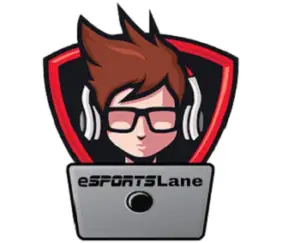With eSports fast gaining traction world over, it’s worth looking at how its market is growing in the second-most populous country in the world, India. Especially since the world’s most populated country, China, is also the biggest eSports market in the world. Here’s more on what are the career prospects of an Indian esports player along with the opportunities and challenges presented.
Table of Contents
Introduction to eSports in India
eSports – short for “electronic sports”, is a modern day sport played using video games. Generally, it involves two or more players being arranged into teams competing against each other in a multiplayer video game.
Though the concept of organized gaming competitions has existed for decades, the modern day variant of eSports has gained traction since the 2000s with the development of online video games dedicated for multiplayer action.
In terms of the most popular eSports played globally ranked by prize money, the biggest games are Dota 2, Counter-Strike: Global Offensive, Fortnite, League of Legends and Starcraft II.
Globally, the market for eSports is increasing at a rapid pace – with projections that the global market will have revenues of over $1 billion in revenues by 2020 and increasing at a pace of nearly 16% per annum with the bulk of revenues (three quarters to be precise) coming from media rights and ownership.
In terms of audience, it’s estimated that there are some 495 million fans for the emerging sport – with the majority of the fan bases coming from populous markets like the United States, Brazil, China and recently, India.
The eSports market in India is a burgeoning one which is quickly gaining popularity – especially among younger generations in urban areas.
With one of the largest economies in the world and a fast growing service sector, the eSports market in India is currently estimated to be valued at around $818 million (as in the year 2020) and constantly growing with an estimated 120 million online gamers – especially with recent cash inflows of millions of dollars from major global players like Tencent, Apus and Yoozoo Games.
What’s Changed
What once would seem unheard of and perhaps even scoffed at, a career in eSports is now increasingly becoming more of a viable prospect for many urban Indian teens.
Steadily, with increasing incomes and prosperity among urbanites as well as the expanding reach and penetration of the internet and computing and mobile technologies, more and more kids are taking up playing video games not just as hobbies, but as serious professional ventures and careers.
As an example of the huge growth of eSports in the country, in 2010, there were only 25 developers whereas till April 2019, that number has swollen to 250 with more joining the ranks every moment.
Revenues too, have skyrocketed, with India now ranked number sixteen globally in terms of largest markets for gaming.
Increased Jobs Market
This has resulted in the job market for eSports also growing – with new opportunities for game developers, programmers, network administrators, data operators, team managers, trainers and others – apart from the eSport players themselves.
There is one huge factor at play here.
Instead of being called “gamers” perhaps condescendingly before, nowadays eSports players are more respectfully called athletes and are steadily being provided the same facilities that athletes from other professions take for granted.
eSports in Asian Games Helps India’s Cause
In a landmark precedent, eSports was introduced as a demonstration sport in the 2018 Asian Games – with the games hosted in Indonesia and the gold medal won by China.
During the games, India’s Tirth Mehta brought honour for the country by winning the bronze medal in Hearthstone and bringing newfound recognition for the growing sport in the country. Some of the other games which were played included Clash Royale, StarCraft II, Pro Evoution 2018, Arena of Valor and League of Legends.
What this would hopefully do is to help the masses recognize eSports as a sport. This is because once you go from casual gaming to professional eSports – significant differences can be noticed.
According to Akshath Rathee, the Managing Director of Nodwin Gaming, the typical eSports gamer in any game tends to “click the mouse approximately 80-400 times and presses around 9 keys on the keyboard with his left hand 400 times in a minute.”
“He is in an environment where his total responses are over 1,000 times a minute. The physical performance required from an eSports athlete is not doable by any casual gamer.”
Still, today, when asked what exactly eSports is, most people will confusingly remark that it is playing online video games.
Especially, when older generations are approached, they will not hesitate to disregard eSports as a professional sport – and would be much more encouraging for their children to take up traditional sports like cricket, football or tennis.
However, to the avid eSports enthusiast, it’s more of a passion and way of life – and also a means of establishing a career.
People like Rathee are still wary of the current limited opportunities for eSports as a career pursuit, but the market is showing lots of growth and promise, with Rathee quipping, “A career in eSports or gaming in India can easily earn you anywhere from INR 50,000 to Rs 2 lakh in a month.”
In a country where the middle-class earns in the range of $406-$1232 (approximately INR 30,000-90,000), the aforementioned figures are extremely good going for a nascent industry.
The Pandemic Effect
While almost all sports have gotten affected by the spread of the coronavirus and forcing people to stay indoors, it comes as no surprise, eSports has not just escaped its wrath but also grown significantly during that time.
India’s bronze medallist at the Asian Games, Tirth Mehta revealed in a recent chat with a news agency how the pandemic has actually helped increase the following in eSports and gaming in India.
With the face of sport expected to change even as the world gets back on its feet, more and more companies are investing in eSports because of its very nature. Also, obviously because of the number of people who are taking up on gaming in the country.
Mehta said given the kind of audience which is available for eSports in India, he hoped more tournaments were broadcast on TV in the country.
eSports on Indian TV
What also helps is eSports is now getting broadcast on Indian television.
One of the mainstream Indian sports channels, DSPORT telecast the ESL India Premiership in 2017, U Sports broadcast an eSports-based show U Cypher on MTV India in January 2018 while in more recent times, MTV India began airing an hour-long show called Esports Mania which gives insight into the Indian eSports scene.

Challenges for the Indian Gamer
Despite the promising prospects, there are however a number of challenges that need to be addressed by the country in order to further propel growth and stimulate careers in eSports.
Limited Funding & Development
Firstly, the number of companies in the country is still limited – with the largest player being Chinese Tencent and with local companies like NODWIN Gaming, Nazara Technology, Jetsynthesys, Gaming Monk and Neon Gaming Studio far behind in terms of funding and development.
Infrastructure Issues
Another major hurdle is the limited infrastructure and connectivity – especially in rural areas – with eSports requiring intensive amounts of internet speed, high-end computers, modems and electricity in order to maintain latency.
Companies like Reliance Jio have been actively attempting to improve the situation, having setup 300,000 mobile towers spread across 3.5 million kilometres of high speed broadband cables across the country to enhance connectivity.
Nurturing Talent a Problem
Additionally, apart from software and hardware limitations, facilities like academies for budding players are still missing to nurture rising talents – something badly needed if players are to reach global standards.
Look at the UK and US for instance and more and more universities are offering courses on eSports in recent times. Here’s a list of the UK-based universities associated with eSports.
Lack of Awareness
Another major hindrance is the still nascent awareness among the masses regarding eSports and its skyrocketing potential.
In 2018, India had only an estimated 2 million enthusiasts and another 2 million “occasional viewers” viewing eSports – with however that figure expected to grow five-fold to 10 million enthusiasts by 2021, according to the report ‘Industry Insights for Online and Mobile Gaming in India’ report by Frost and Sullivan.
The Age-Old, ‘But Is This a Career Option?’ Issue
(incidentally, the answer to the above question is yes, check out more than 20 non-gaming eSports job profiles here).
There’s also an age-old issue which afflicted sports like cricket too. Cricket has been India’s number one sport using every possible parameter with the Indian Premier League valued at more than $5 billion but things have only changed in the past couple of decades or so.
Before that, there was a general reluctance among the Indian middle-class to allow cricket to take any precedence over education and the lack of environment as a viable career option made it tougher for high-quality cricketers to come through.
It is not too different for eSports in India.
Most gamers in the country face the same issue cricket had faced over the years. Parents find it difficult to reconcile with eSports being a career option and the lack of encouragement makes it tougher for it to grow.
In an interview, Tirth admitted while his parents had been very supportive, others weren’t as lucky. He said:
“Most eSports players face issues like parents not allowing them to compete in events and forcing them to go to school, which makes sense.”
“But they should give their children some chance to at least prove themselves. Give them permission to attend at least one or two events and see if they succeed there.”
“I think if the parent’s mentality changes, hopefully, it will with this event, then I’m hoping that eSports players in India can show their potential to the world.”
Take the example of Ranjit Patel, an India-based shoutcaster (read more about what is an eSports shoutcaster here and how much do shoutcasters earn here) whose eSports career got a major boost when he began shoutcasting in 2015.
He had a similar story when he needed to “ask his parents” for four years to make something out of his eSports potential because he could settle down in a traditional job.
Today, he is one of the most recognized faces in the Indian eSports industry.
Conclusion
Indeed there exists a lot of potential for the eSports market in India and for young individuals to take up eSports as a career path.
Considering the rapid growth and growing awareness of the sport and the global nature of online gaming and broadcasting, it will not take very long for the country to establish a future global footprint and its eSports athletes to start competing head on with established giants by gaining fame and fortune along the way.


